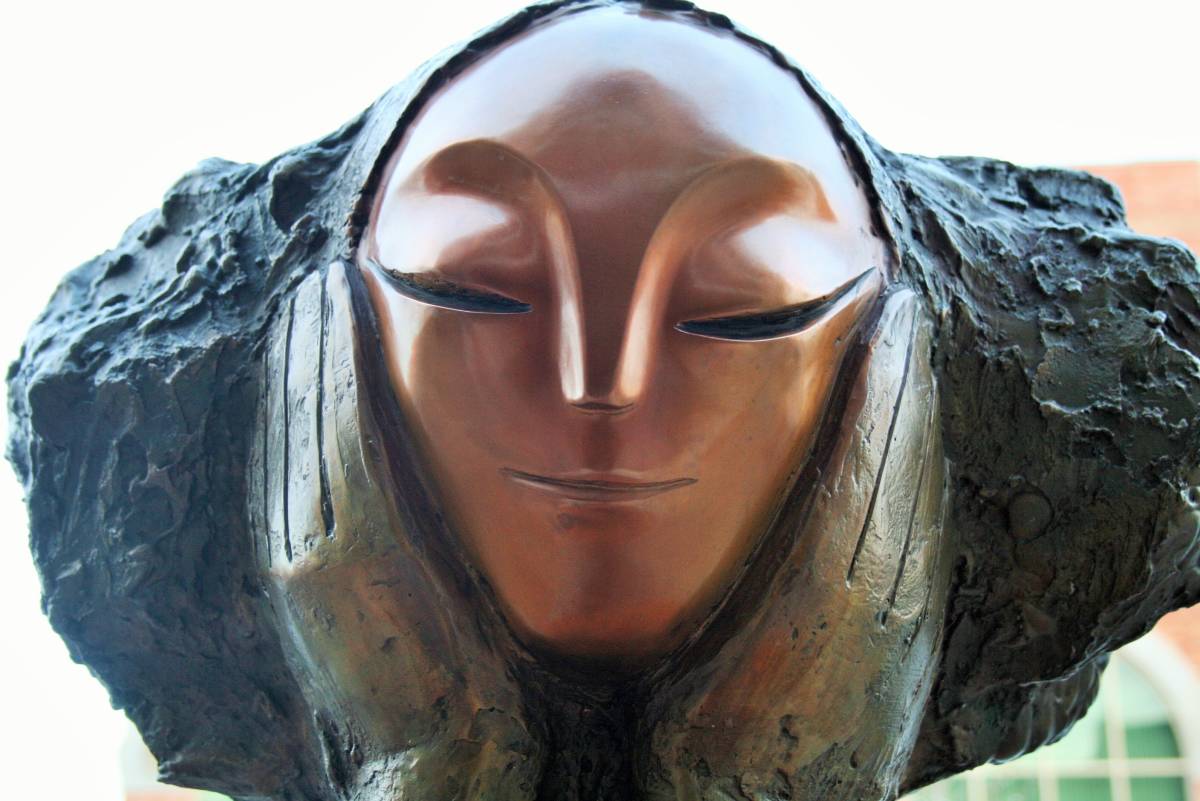
Dimitry Domani’s “Donatela” incorporates bold power while infusing the fragility of grace, hope, and subtle beauty. The emerging polished face, possibly representing hopes and dreams, is forged out of the raw background. When viewing from this perspective, one cannot help but feel emotion and connection to his or her own desire to break free to live the life they are meant to live.
“Donatela” holds her face in her hands. The hands both appear to be resting her face as she dreams of what is to come as well as washing herself of the things holding her back. She presents a look of determination, confidence, and joy in knowing where she is going. There is a look not of weariness from the struggles but of the happiness of dreams materializing.
 Although there are many interpretations for the possibilities of the story behind “Donatela,” this one certainly would be able to be said about the artist, Dimitry Domani. His story is just as interesting, bold, and filled with hope and determination.
Although there are many interpretations for the possibilities of the story behind “Donatela,” this one certainly would be able to be said about the artist, Dimitry Domani. His story is just as interesting, bold, and filled with hope and determination.
Domani was born in Romania where he grew up in an oppressive communist dictatorship. Both his father and older brother were imprisoned for over a decade under the Nicolae Ceausescu regime. Domani displayed natural artistic aptitude, which won him admission to the highly competitive and comprehensive art school of Timisoara.
In 1978, Domani and five friends walked 75 miles to escape the bleakness and oppression that surrounded them. They walked into Yugoslavia where they were captured by police, and he became a political prisoner in another communist country.
After being in prison for a year, Domani and his group were taken to the Austrian border where they were released and escorted to a refugee camp in Vienna. Here he spent another two years dreaming of freedom. Although he could have had immediate citizenship in Canada or Australia, Domani held out for the full realization of his lifelong dream to be an American. Following many interviews at the American Embassy, he was finally granted a visa to the United States in 1981.
It is this same level of determination so easily seen in viewing “Donatela.” The struggle of the past, resolve of the present, and optimism for the future is something all can relate to. “Donatela” confidently conveys this message of hope to all who look upon her.



